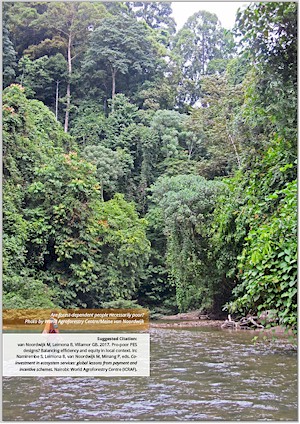| Book Chapter |
 |
|
| Title | Pro-poor PES designs? Balancing efficiency and equity in local context | | Author | Meine van Noordwijk, Beria Leimona and Grace B.Villamor | | Editors | Sara Namirembe, Beria Leimona, Meine van Noordwijk and Peter A Minang | | Year | 2017 | | Book Title | Co-investment in ecosystem services: global lessons from payment and incentive schemes | | Pages | 1-14 | | Call Number | BC00434-17 |
|
| Abstract: |
| In exploring the relationship between social equity, ecosystem (environmental) services and the intent and practice of PES systems of various design, we may need to first unpack the concept of poverty in its rural or urban context. Research on the topic has followed two traditions: bottom-up approaches, based on listening to what poor people say about their (lack of) well-being, and top-down ones based on what is represented in spatial data and government statistics, often with a primacy of per capita income data (or percentage of population below a poverty threshold). Poverty impacts of PES depend on how many PES participants are in fact poor, on the poor’s ability to participate, and on the amounts paid or invested2. “Although PES programs are not designed for poverty reduction, there can be important synergies when program design is well thought out and local conditions are favourable”2. Possible adverse effects can occur where property rights are insecure or if PES programs encourage less labour-intensive practices without increased returns to labour. Subsequent analysis has explored concepts beyond direct payment3. |
|
|
Download file(s): Click icon to download/open file.
|
| |
File Size |
Description |

|
4307 KB |
Softcopy |
|
|
|
| Viewed in 269 times. Downloaded in 182 times. |